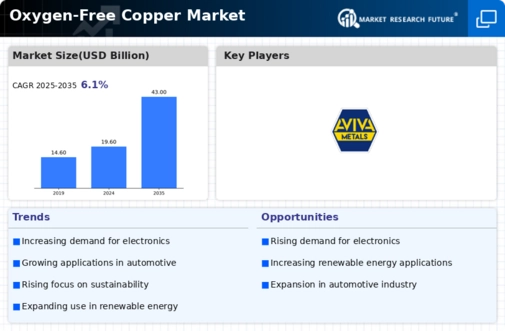Market Analysis
In-depth Analysis of Oxygen-Free Copper Market Industry Landscape
As a result of many things affecting it, the Oxygen-Free Copper (OFC) Market is always changing. Businesses and other players need to understand these market factors in order to navigate the complex oxygen-free copper sector. The computer and electrical businesses are very connected to the market. Oxygen-free copper is a popular material in these fields because it conducts electricity well. It is growing because more people want electronics, power production, and transportation tools. Oxygen-free copper's high electrical conductivity is what drives the market for it. High-end recording equipment and superconductor technology, which need very little electrical resistance, support the demand for oxygen-free copper. The amounts of quality and types of oxygen-free copper affect how the market moves, with different needs calling for different standards. Higher levels of clarity may be needed in fields like aircraft and healthcare, which could affect the market for certain types. The need for oxygen-free copper in electrical parts and wires is growing because of the rise of green energy sources like solar and wind power. Being efficient and lasting a long time are what make it useful in green energy uses. The market for oxygen-free copper is affected by the growing use of electricity in cars, especially electric vehicles (EVs) and hybrid cars. Electrical vehicles (EVs) use oxygen-free copper in many parts, like the wheels and charge systems. The general demand for oxygen-free copper is affected by the economy and manufacturing operations. The way markets work is affected by changes in the economy, which has an effect on industries like manufacturing, construction, and building new infrastructure. Copper goods without oxygen are getting better thanks to ongoing study and technology advances in metals and industrial processes. New improvements in processing methods and alloying elements affect how well oxygen-free copper works and how much it costs. There is a lot of competition in the market, and the big players are all trying to stand out by improving their products and coming up with new ones. Mergers, purchases, and strategic partnerships are all popular ways to improve market places. This is affecting the oxygen-free copper market because people are caring more about health and the environment. Initiatives to recover and the use of salvaged copper in making help the business be more environmentally friendly.




Leave a Comment